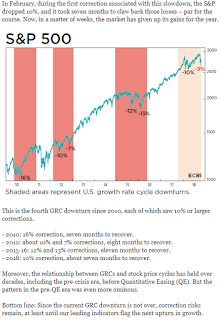Graph: State Street Investor Confidence Index vs the S&P 500
- “As major stock indices were hitting record highs near summer’s end, there were signs that institutional investors were reducing risk exposure,” commented Froot. “As we’ve progressed into fall, equities have declined further as the VIX has doubled. In the US, this month’s sell-off erased all 2018 year-to-date equity market gains, and amid concerns about high valuations and whether earnings may have peaked, some market participants seem to be anxious over a prolonged period of risk aversion.”
- “The sharp downgrade our Investor Confidence Index recorded in September was one of the few early warning signs of the ensuing market turbulence that has followed. Confidence has fallen further in October and is more widespread, especially in Europe where not only are political risks rising, but growth is disappointing too. The main difference this month is that the Investor Confidence Index is no longer alone in pointing to potential vulnerabilities; business and consumer confidence are also beginning to wobble too,” commented Michael Metcalfe, head of global macro strategy, State Street Global Markets.
- A reading of 100 is neutral; it is the level at which investors are neither increasing nor decreasing their long-term allocations to risky assets.
Graph: State Street Investor Confidence Index vs the DJIA
Graph: State Street Investor Confidence Index vs the Nasdaq
- The index is released globally at 10 a.m. Eastern time in Boston on the last Wednesday of each month. More information on the State Street Investor Confidence Index is available at http://www.statestreet.com/ideas/investor-confidence-index.html.
- pdf: Investor Confidence Declined in October by 3.4 Points to 84.4
According to State Street,
"The Investor Confidence Index was developed by Kenneth Froot and Paul O’Connell at State Street Associates, State Street Global Exchange’s research and advisory services business. It measures investor confidence or risk appetite quantitatively by analyzing the actual buying and selling patterns of institutional investors. The index assigns a precise meaning to changes in investor risk appetite: the greater the percentage allocation to equities, the higher risk appetite or confidence. A reading of 100 is neutral; it is the level at which investors are neither increasing nor decreasing their long-term allocations to risky assets. The index differs from survey-based measures in that it is based on the actual trades, as opposed to opinions, of institutional investors."Regional Data:
11/1/18 Update: Fear and Greed Index shows a similar outlook.
x

































